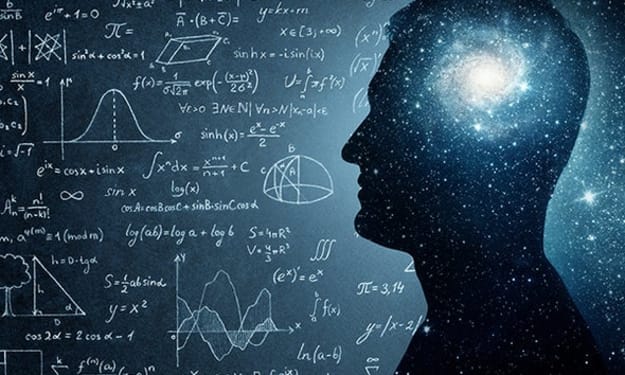Demystifying vectors, matrices and linear algebra
An introduction to the theory and applications of linear algebra, without using a single equation!

Mathematics often is reduced to arithmetic and number theory, and drives many to despair and boredom. Complex numbers and imaginary numbers are cool enough to make the bleak mathematical horizon much brighter. However numbers are not the only mathematical construct which describes the world around us. Far more abstract is the notion of a vector or a matrix. And these mysterious objects, are fundamental to the very nature of reality. And I wish to share this with you, without using a single equation! So if you would like to learn about the quantum world, but don’t want to battle through a hoard of monstrous equations, this is the article for you.
So what are these strange mathematical constructs I speak of? Well, to get to a matrix, we must first understand the vector.
Imagine you had two boxes. One box could contain a cat, the other a dog but you do not know whether there is a dog or a cat in either. How many possible states are there of this system of boxes? Well in one state you have a cat and dog, in one just a cat, in another just a dog and lastly you could have no dog and cat at all. Therefore there are four possible states. How do we represent these states? Well, clearly a state with a cat and no dog, is distinguishable from a state with a dog and no cat and so whatever mathematical construct we use to represent the states, needs to be able to reflect this. One such construct is a vector.
A first introduction to a vector, is to think of it as a single object, which is a sequence of ordered numbers. By ordered I simple mean that when we write them in a certain order, the order matters. The same set of numbers, written in a different order, gives you a different vector. The position of an element in a vector, is called an index. In our example the index could correspond to whether a cat or a dog can be found in the two box system. In that way a vector containing the same set of numbers, but in a different order, corresponds to a different physical thing. With vectors, order matters.
We can think of coordinates as being related to a vector, since if we have two distinct numbers, the order in which they are written is very important when describing the position of a point in space. If we draw a arrow from the origin of a coordinate system, to a point, we therefore have a visual representation of a vector.
From the arrow analogy we think of a vector as something with magnitude and direction, although there are other physical analogies of vectors which posses these properties and are not arrows. We could, for instance, think of a vector as a stack of sheets, with the density of the sheets corresponding to the vectors magnitude and the orientation of the stack corresponding to the vectors direction.
The amount a arrow cuts through a stack, is represented by a mathematical operation known as the scalar product (also called the dot product). We could also get two two-dimensional arrows and lie them tip to tip. Taking the mirror image of this and putting it with the original two vectors, we get a parallelogram. The direction of this parallelogram, as well as its area, corresponds to a new vector which is obtained by taking the vector product of the initial vectors. This process is known as taking the vector product (also known as the cross product).
One very important consequence of this visualization of a vector, is direction is relative. Therefore if we have a vector and rotate our coordinate system, we will end up describing that same vector differently since we would now consider the vector as having a different direction relative a given rotated axis. A scalar, like temperature, however does not change. This is since a scalar has no direction. We can use this to show that the vector product does indeed result in a vector, and the scalar product results in a scalar.
So vectors are an ordered list of numbers. But why stop there? Can we have an ordered list of vectors. Yes, we can! And we call this ordered list, a matrix. A matrix is to a vector, what a vector is to a single number. More formally, a matrix contains more information than a vector, and can be considered as a higher rank of tensor. Tensor algebra is something worth mentioning, but not something I will go greatly into. All objects in mathematics are defined by their properties. And so to understand a matrix, we must understand its properties. Then we shall explore how vectors and matrices, all link in with quantum mechanics and the physical universe at large.
To do arithmetic with matrices, we need to define a new type of product. This product is just called matrix multiplication, and since order matters, it has the cool feature that A times B will usually NOT equal B times A, providing A and B are matrices. We call this bizarre property of matrix multiplication, non-commutativity.
This is a very counter intuitive property compared to normal multiplication, so how should we interpret this? Well, although I shall not prove it here, we can think of a matrix as an operator which acts on vectors to produce new vectors. If A and B are matrices, and C is a vector, then ABC is what we get when we first do operation B on vector C, to get a new vector, and on this new vector we then act operator A. If C is an arrow, lets consider the special case where B is a rotation matrix and A is a translation matrix. In this case, we should expect the order over which A and B are operated to matter, since if we do A and then B, we will end up with a different vector then if we did B then A. So the fact that matrix multiplication is non-communitive in general, reflects the fact that the order over which actions are taken matters.
Non-commutativity is a seemingly baffling feature of matrix arithmetic, encapsulating a perfectly obvious and intuitive fact about every day life. After all, if you where going to walk to a bus stop and then get a bus, you would not of course expect to arrive at your destination if instead you tried to get onto a bus before walking to the bus stop.
Matrices and vectors are used through out physics, particularly in quantum mechanics. In quantum mechanics we describe the state of the particle using vectors, and we describe physical observables such as momentum and kinetic energy, in terms of matrices. But is this the only way of doing quantum mechanics?
Using Dirac’s notation we describe the state of a particle, typically its spin, using vectors containing complex numbers. We also use matrices to refer to the spin of a particle along a particular axis, and we call these the Pauli matrices. However in Schrodinger’s approach, we use functions to describe the state of a system and differentials to describe the physical observables. Yet surely these two approaches must in some senses be equivalent, since they both yield the same predictions.
Well, yes, but then we have to let go of thinking about vectors visually. We have to abstract them a bit further. We could decompose a arrow into the vectors which lie along the axis of interest. We could equally add these component vectors to make the original one. Lets pick only a few component vectors. If we choose our component vectors well, we could in fact describe any vector which has the same number of dimensions as the component vectors, by adding different amounts of a finite (or countably infinite) collection of component vectors. In this case we call the set of the component vectors a basis.
Similarly if we have a polynomial, then we can describe that as the sum of terms, with each term involving a variable raised to some integer power. Therefore a polynomial can be constructed from a basis in very much the same way a traditional vector can. Where as with an arrow, we can draw the basis vectors and thus show very clearly how it works, with a polynomial this is not so easy to do. However there is so much synergy between a polynomial and an arrow, and indeed between many types of functions and vectors, that in many ways we can think of them as one and the same thing. Due to this we introduce the concept of a linear algebra which concerns itself with a new system where functions, vectors and even matrices are treated on somewhat equal footing.
Linear algebra has application in solving many problems of physical relevance. Every time a drum membranes vibrates, the vibration is described by spherical harmonics and these functions are very well understood in the context of linear algebra. Linear algebra also allows us to unite Dirac notation with the more traditional ways quantum mechanics is taught. Therefore I would heavily encourage everyone to get out a pen and paper and dive into the world of linear algebra. It’s a bizarre land, but one well worth the adventure.
About the Creator
Reality Detective
Recently finished a Physics course at university. Now going into writing and exploring the world with the lens of fantasy and science.
Enjoyed the story? Support the Creator.
Subscribe for free to receive all their stories in your feed. You could also pledge your support or give them a one-off tip, letting them know you appreciate their work.






Comments
There are no comments for this story
Be the first to respond and start the conversation.